13 Release Notes Templates [With Examples]

By Dayana Mayfield
Last updated on Thu Aug 25 2022
If you don't let customers know about new features, they'll go unnoticed.
Release notes are just one part of the release communications arsenal, but they are one of the most important. Having a dedicated page for announcements makes it easy for customers to find the most up-to-date information about your product.
It also shows prospects what you've released lately so that they know you're continuously innovating
When writing release notes—or anything for that matter—it certainly helps to have templates. Below, we've created some easy-to-use templates and rounded up plenty of examples to inspire your release communications.
1. Single-feature release note template
Think of this as a basic release note template that you can use for any new feature. If you prefer to call attention to individual features, rather than mention many features in a monthly update, then use this template.
Template:
[Interesting hook to pull in the reader..]
[Description of the new feature]
[Picture or GIF of the new feature.]
[Reason it was created, being sure to link to the feature request if there is one.]
[Description of which plans the new feature is available on.]
Example:
Check out this example from our own product feedback and roadmap tool, Frill:
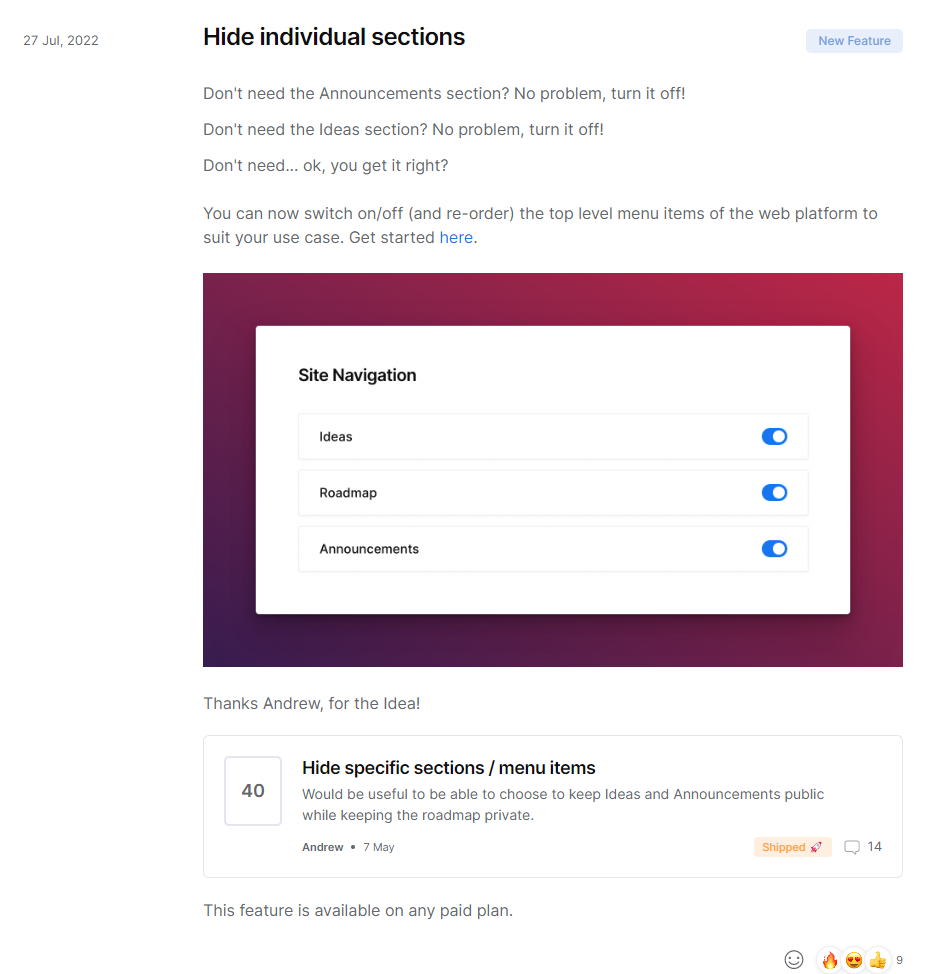
It includes simple, engaging copy to describe the feature, plus it ties the release back to the exact request from a user.
With Frill you can manage feature requests, roadmaps, and announcements in one place. Check out our example board and create your own.
2. Weekly round-up release note template
Writing weekly releases is rare. Most product managers using the round-up style will write a monthly release (see below). However, if your product is designed for developers, cybersecurity engineers, DevOps engineers, or other technical professionals who depend heavily on the viability of your product, you might decide to take a weekly approach to writing release notes.
If you do, make sure to categorize each item, as our template shows below.
Template:
[New features with a bulleted list of each.]
[Enhancements with a bulleted list of each.]
[Bug fixes with a bulleted list of each.]
[Update reminders with a bulleted list of each (if you've released major features recently, be sure to include them here for a few weeks so more customers will see.)]
Example:
In this weekly update example from Automox, we see enhancements and bug fixes included in the same release note.

3. Monthly round-up release note template
Template:
For your monthly round-up page, use this template:
[Names or numbers of each release.]
[Preview description of each release.]
For the release notes that are linked from the monthly round-up, use this tempate:
[Table of contents.]
[Subheadings for clear names of new important announcements.]
Description and GIF or image for each important announcement.]
[Sub-section for speed and performance improvements in bulleted list.]
[Sub-section for bug fixes in bulleted list.]
[Sub-section for webinars, tutorials, or other resources with bulleted list.]
Example:
ClickUp uses a monthly approach for sharing their product releases. As we can see in this example, they include links to all of the different releases that happened that month.

When you click on one of those release note links, you'll then be able to see the full note, with all of the major features, enhancements, speed improvements, and bug fixes.
ClickUp also includes links to webinars where users can learn more about the product and its new updates.
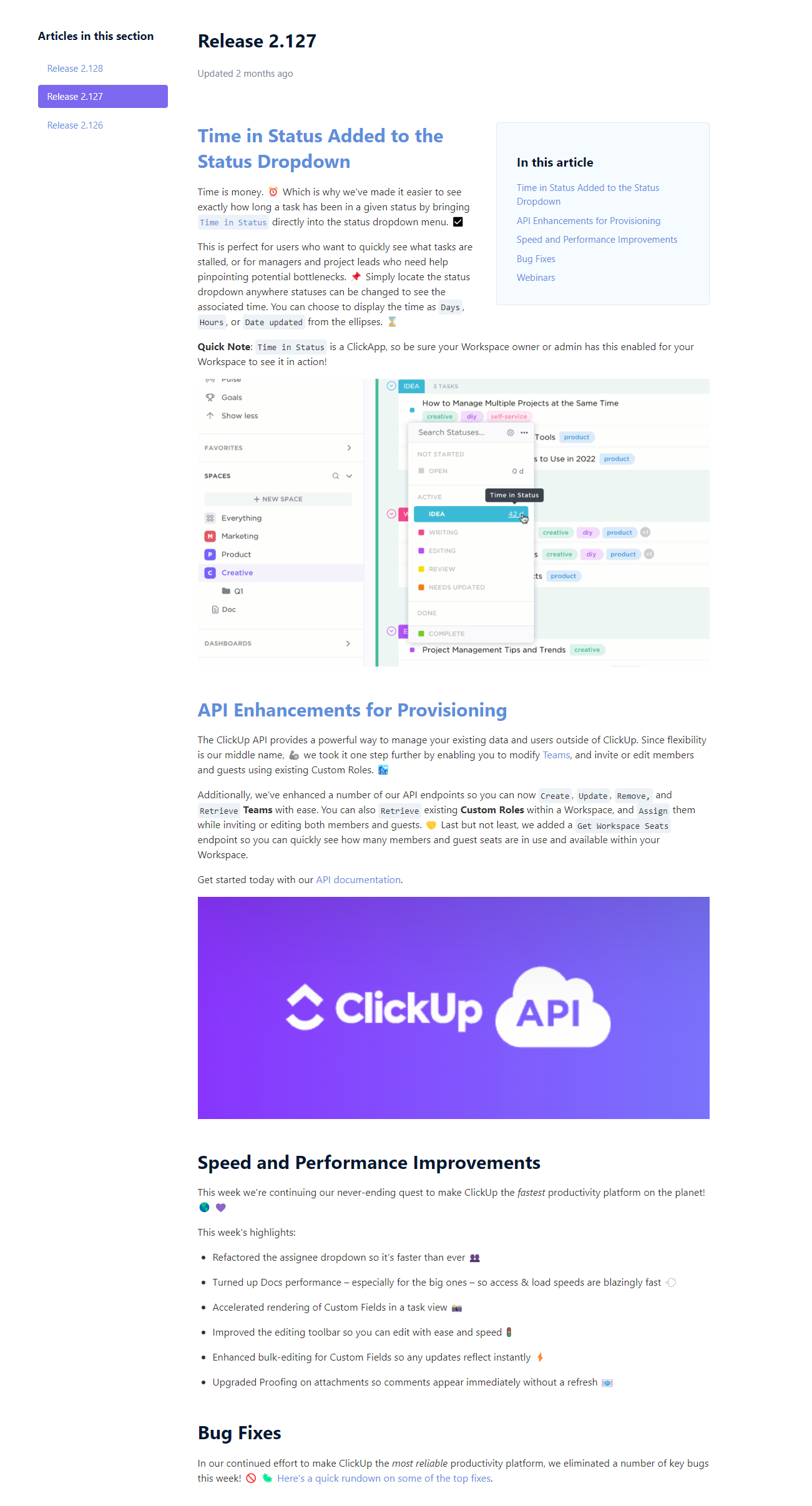
4. Quarterly or seasonal release highlights template
Updating your target users about your product releases on a quarterly or seasonal basis (winter, spring, etc.) is not often enough.
However, this release note template can be really effective for summing up the highlights. Let's face it, the vast majority of your users are not going to read all of your release notes in detail. By offering a quarterly summary, you can give them one place to turn for all of the most important updates. This release note can then be shared via email and on social media.
Template:
[A quick intro with the total number of releases that quarter.]
[A short description with the top-level theme of the most important releases and what they mean for users.]
[A bullet point list of the most notable releases that quarter.]
Example:
Amplitude offers us a great example of a quarterly highlight reel. The writer uses short, simple language and includes really important updates in under 200 words.

5. Annual release note template
An annual release note offers a smart way for companies to share what they've been up to at the end of every year. You can write this annually and send it out, or have it always available and add the most important releases to it throughout the year.
Template:
[The name of the page.]
[A quick description of the product's overall value, the main theme of the most important updates, and how the updates affect the customer.]
[A subheading and description for every month, or every major release that year.]
Example:
TripActions offers a single page where users can view the most important release notes completed each year.
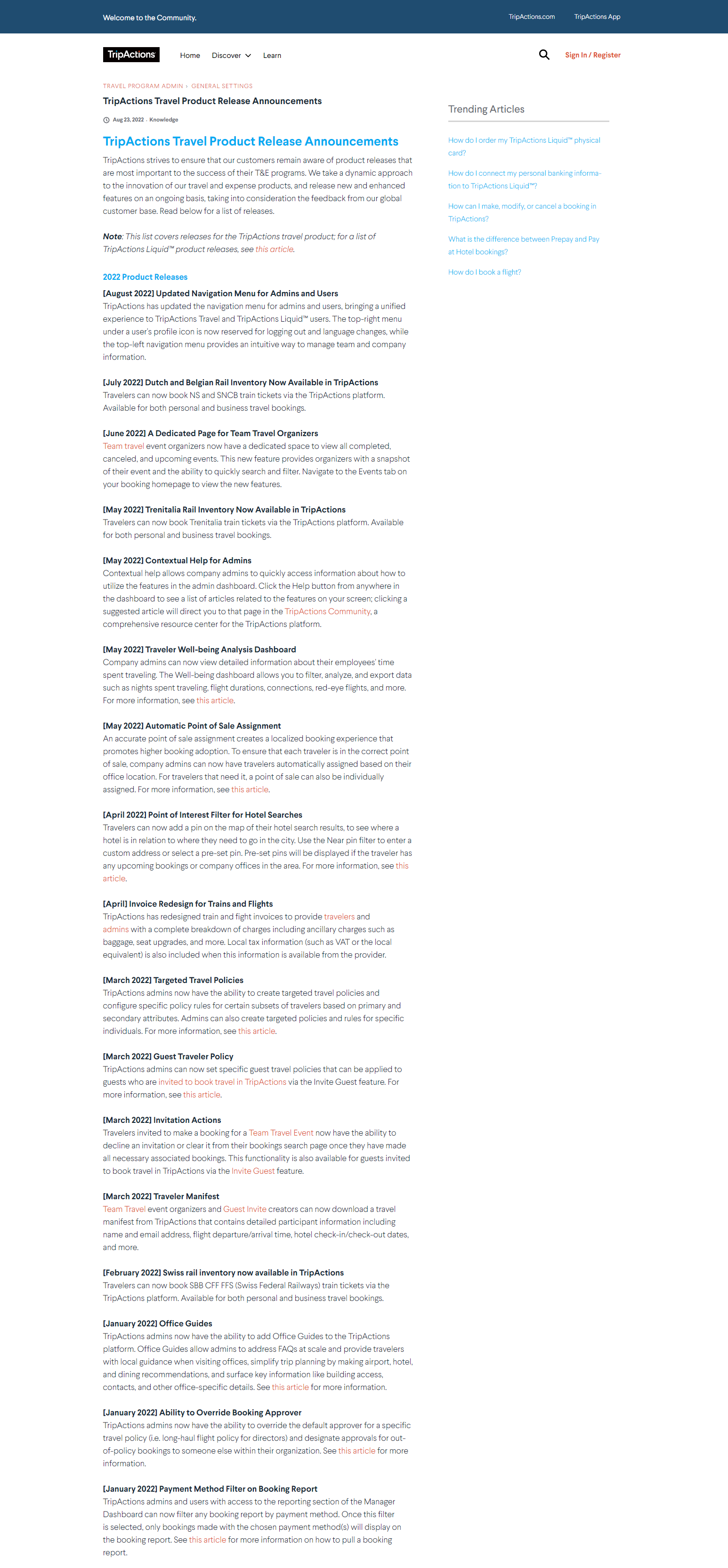
Having an annual release note can be a quick way to show both existing users and prospects that your company is continuously innovating in meaningful ways.
6. Tier 1 product release note template
A Tier 1 release note is (obviously) one written for a Tier 1 release, meaning a product release that is important, will impact the most number of users, and could have an impact on whether prospective users decide to onboard to your platform.
The template can follow the basic, one-feature template used above.
Template:
[Interesting hook to pull in the reader..]
[Description of the new feature]
[Picture or GIF of the new feature.]
[Reason it was created, being sure to link to the feature request if there is one.]
[Description of which plans the new feature is available on.]
Example:
In this example, we showcase our new bulk idea importer, so that users can add feature requests from an Excel or CSV file.
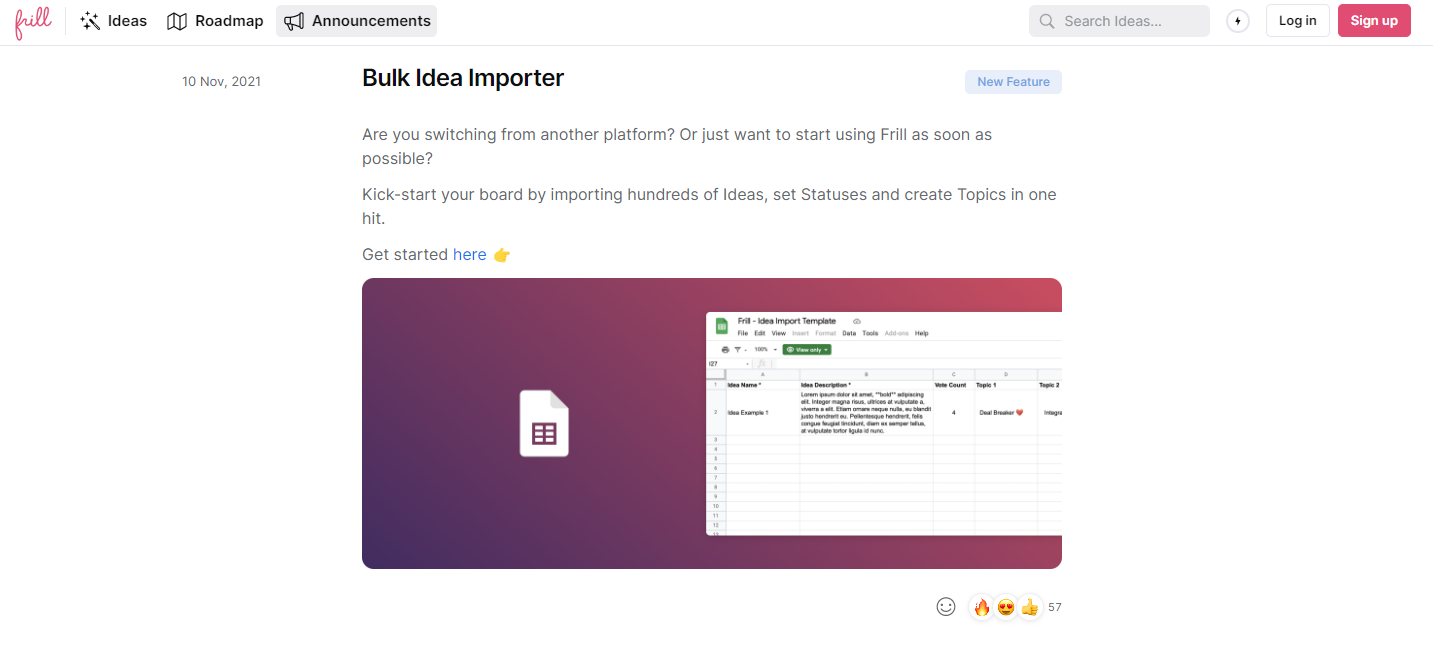
This is a Tier 1 product release for us because it can impact whether or not a new user decides to choose Frill. If they can't easily import their existing feature ideas, they might walk away.
7. Tier 2 product release note template
A Tier 2 product release is less impactful than Tier 1. It probably won't impact whether or not new users decide to sign up for your product, but it can have a positive impact on a large base of users.
This template will typically also follow the single-feature release template.
Template:
[Interesting hook to pull in the reader..]
[Description of the new feature]
[Picture or GIF of the new feature.]
[Reason it was created, being sure to link to the feature request if there is one.]
[Description of which plans the new feature is available on.]
Example:
In this example, we describe the release of a feature that allows users to add ideas on behalf of their users and customers. This is something that a lot of existing users will enjoy, but probably not something that would determine whether someone decides to sign up in the first place.

8. Tier 3 product release note template
And for our last tier, we have Tier 3. These product releases are less impactful. They are typically enhancements to existing features.
The template is a slightly modified version of the single-feature release note template, because it's framed more as an enhancement.
Template:
[Description of the existing feature and why it needed an update.]
[Picture or GIF of the enhancement.]
[Reminder of which plans the existing feature is available on, and a call to action to upgrade the plan if they don't have the feature available.]
Example:
In this example, we share a Tier 3 release note on how customers can now filter through ideas to find ones that interest them. Tier 3 releases are often feature improvements or enhancements.
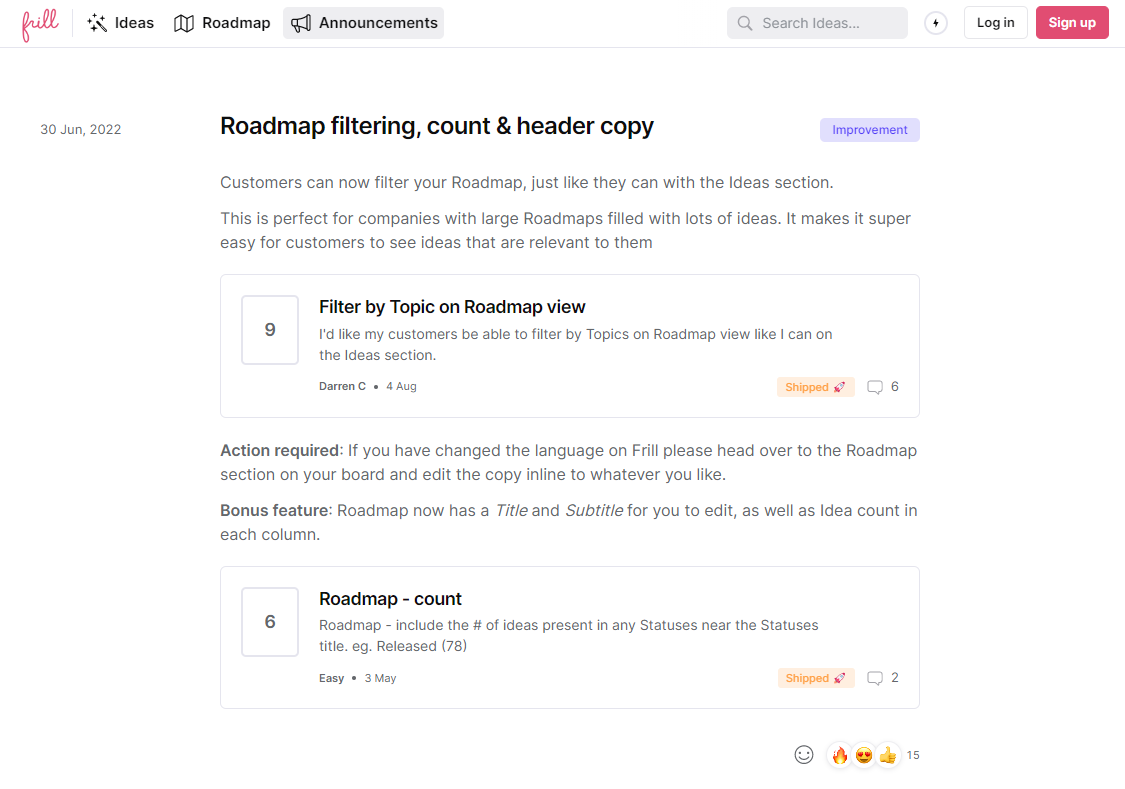
9. Major bug fix release note template
Most product managers will write about bug fixes in their weekly or monthly release note round-ups. However, for a big bug fix, you might want to give it its own release note.
Template:
[Title of the bug fix or bug fix round-up.]
[Subsection for technology improvements with bulleted list.]
[Subsection for major bug improvements with bulleted list.]
[Subsection for localization updates with bulleted list.]
Example:
In this bug fix release note, the developers of the game Chernobylite detail multiple bug fixes and patches, including an issue that was blocking player progress.
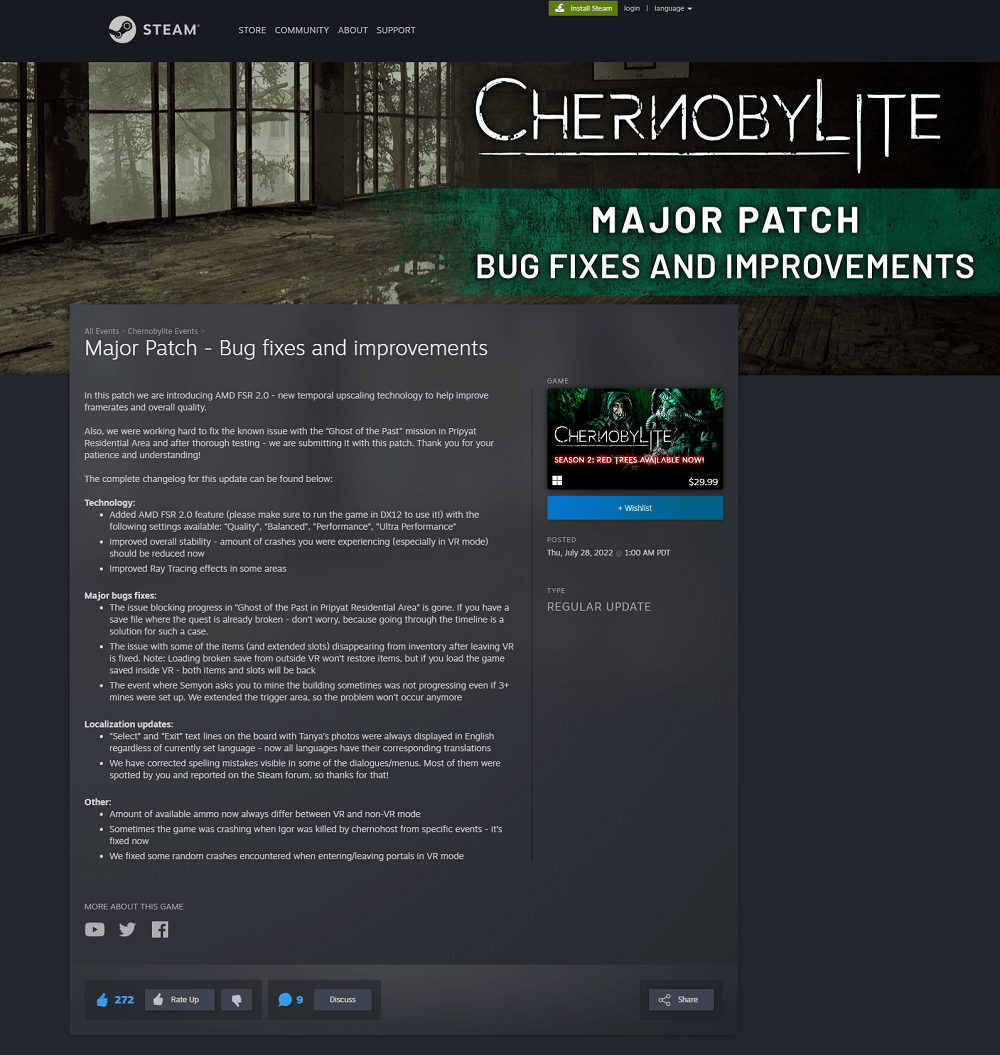
10. In progress feature note template
This sort of release note isn't written nearly as often as it should be.
Of course, it's best practice to share what's up and coming in your public roadmap, but for very important releases or even seasonal round-ups, it can be smart to give your users a hint of what's coming in your announcement section—simply because it's another communication channel that's available to you.
Template:
[A quick overview of what the release offer, in terms of business results, productivity, etc.]
[A reminder of why it's important to read the release note in advance to prepare for the release.]
[A sub-section for each major product and feature and how it will change.]
Example:
This example from Salesforce was written at least 4 months before the release, because it's not even 2023 yet.
It starts with a clear, simple hook: "The Winter ’23 release helps you grow your business, reduce costs, and create efficiencies."
The release note encourages users to read it fully in order to prepare the release and be ready to make use of new features, such as updates to their analytics and customer data platform.
11. New pricing release note template
Whether you publish it on your blog, your product announcement roll, or both, one thing is clear: you'll need a go-to resource for users to understand your new pricing.
Template:
[Release note title, typically including "Pricing Update."]
[Overarching description of the new pricing and reasoning.]
[Image of new pricing structure and plans.]
[Details on what the new plans include.]
[Who the new pricing affects, when it goes into place, and whether or not grandfathering is available.]
[Frequently asked questions.]
Example:
This example from PageFly includes helpful descriptions, visuals, and FAQs so that users are crystal clear on the new pricing structure.
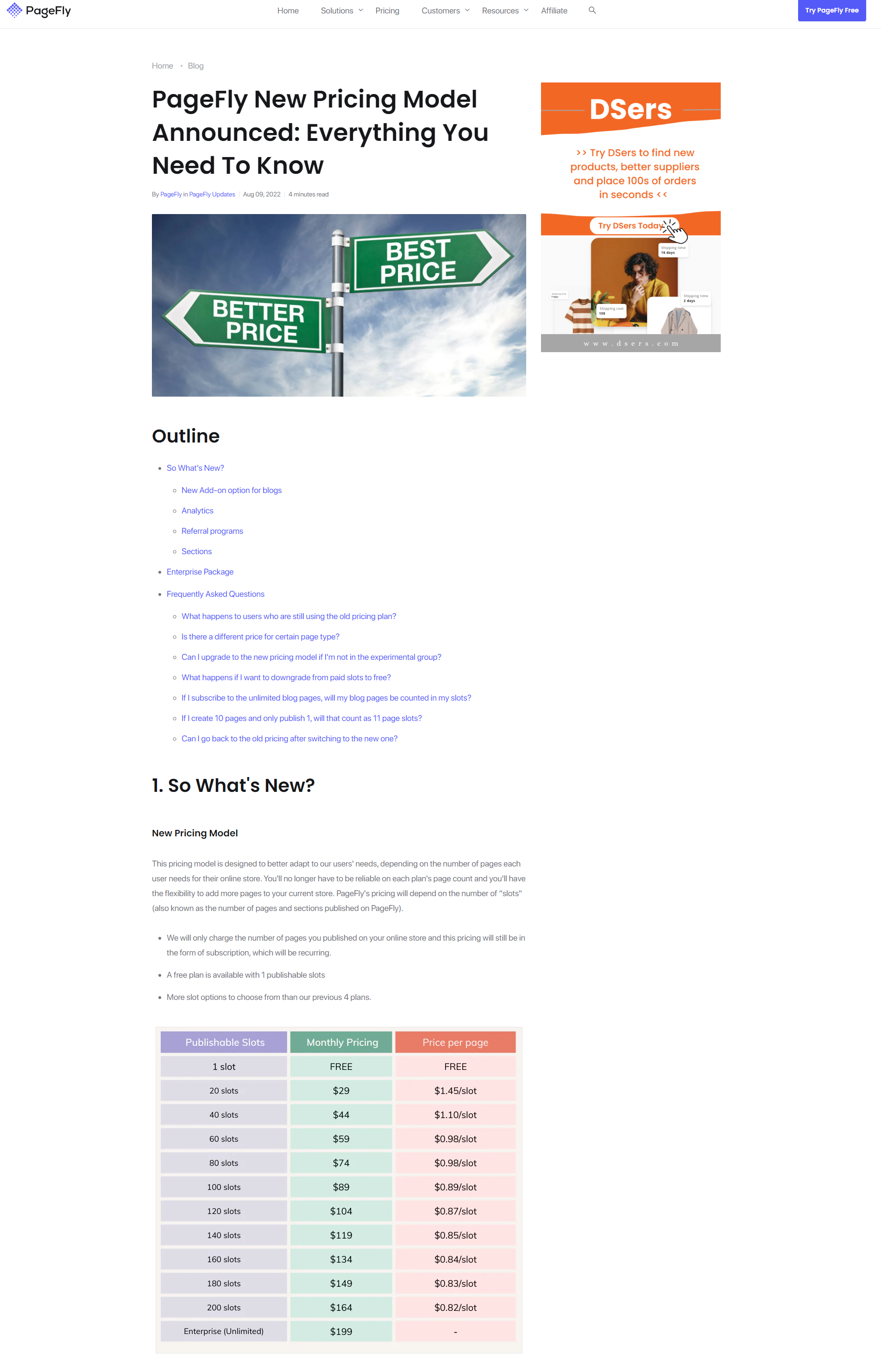
12. Deprecated features page template
Sometimes companies will write an individual release note for deprecated features, but creating a deprecated features page is more common practice. This way, you have all deprecated features in one place.
Features are typically deprecated because they're not popular or are no longer needed, so it makes sense to hide them in one dedicated page rather than announce them to all users. You shouldn't be deprecating features people really want.
Template:
[Title, typically "Deprecated and removed features" to make it clear for non-technical users.]
[Description of why features get depricated.]
[List of deprecated features, their area or product, and whether or not a replacement was offered.]
Example:
In this example from Adobe Experience, we see all deprecated features in one place.
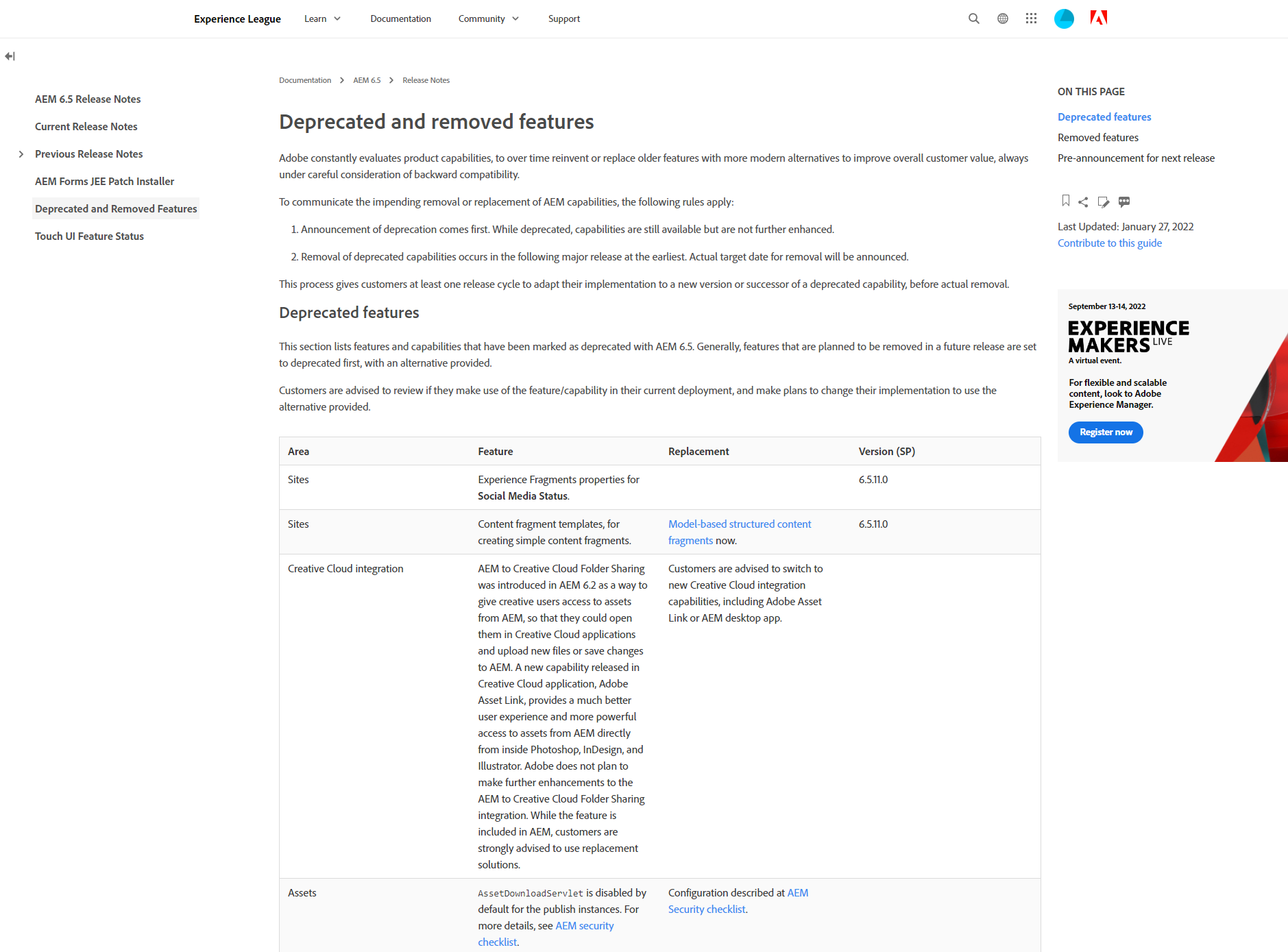
13. [BONUS] Product updates landing page template
Do you have a landing page for your product updates? If you offer a complex, enterprise product, this can be a smart way of winning over both prospects and current clients.
This is an uncommon product release communications strategy that is very visually appealing.
Of course, you'll still need to write regular release notes, but this can be a way of summing everything up and packaging it together.
Template:
[Title of product release theme or time period.]
[Paragraph description of recent releases and why they matter.]
[Sub-sections and images for each release category, product, or feature.]
Example:
TripActions is one of the few companies that has a product release landing page. This offers a well-formatted, sales-oriented asset that sales reps can use to show the company's new innovation and customer success managers can use to send to accounts at risk of churn. Adding professional stock images by Depositphotos could further enhance its effectiveness by providing visually striking support to the written content.

Writing release notes is a whole lot easier with templates and examples. So give these a go.
Looking for one place to manage feature ideas, your roadmap, and announcements? Check out Frill.